-
 bitcoin
bitcoin $103094.926080 USD
3.95% -
 ethereum
ethereum $3398.208576 USD
6.43% -
 tether
tether $0.999971 USD
-0.04% -
 xrp
xrp $2.326205 USD
9.96% -
 bnb
bnb $947.145845 USD
4.46% -
 solana
solana $160.315987 USD
7.54% -
 usd-coin
usd-coin $1.000014 USD
0.01% -
 tron
tron $0.288163 USD
2.37% -
 dogecoin
dogecoin $0.164881 USD
5.50% -
 cardano
cardano $0.536519 USD
7.14% -
 hyperliquid
hyperliquid $40.526327 USD
6.62% -
 chainlink
chainlink $14.898178 USD
5.68% -
 bitcoin-cash
bitcoin-cash $483.923206 USD
4.44% -
 ethena-usde
ethena-usde $0.999280 USD
0.02% -
 stellar
stellar $0.276354 USD
6.32%
How does elliptic curve cryptography (ECC) work in blockchain?
Elliptic Curve Cryptography (ECC) secures blockchain with compact keys, enabling efficient, scalable transactions while resisting brute-force attacks.
Sep 03, 2025 at 11:55 am
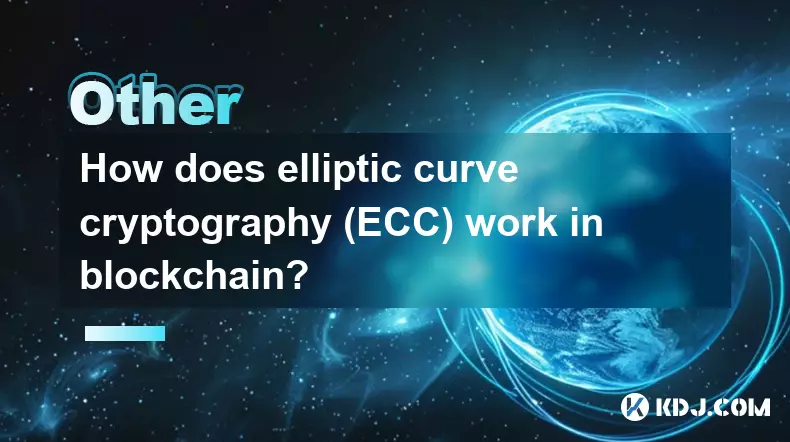
Understanding Elliptic Curve Cryptography in Blockchain
1. Elliptic Curve Cryptography (ECC) plays a foundational role in securing blockchain networks. It enables the creation of public and private key pairs that are mathematically linked but computationally infeasible to reverse-engineer. The private key is a randomly generated number, while the public key is derived by performing scalar multiplication on a predefined point on the elliptic curve.
2. The specific curve used in most blockchains, including Bitcoin and Ethereum, is called secp256k1. This curve follows the equation y² = x³ + 7 and operates over a finite field. The security of ECC relies on the difficulty of solving the elliptic curve discrete logarithm problem (ECDLP), which means that given a public key, it is practically impossible to determine the corresponding private key.
3. Transactions in blockchain are digitally signed using the sender’s private key. The signature proves ownership without revealing the private key. Nodes on the network verify the signature using the sender’s public key and the mathematical properties of the curve. This process ensures authenticity and prevents tampering.
4. ECC offers equivalent security to RSA with significantly smaller key sizes. A 256-bit ECC key provides the same level of security as a 3072-bit RSA key. This efficiency reduces storage and bandwidth requirements, making ECC ideal for decentralized systems where performance and scalability matter.
5. The deterministic nature of ECC allows wallets to generate multiple key pairs from a single seed phrase. This hierarchical deterministic (HD) structure improves usability while maintaining strong security, enabling users to manage multiple addresses without compromising their private keys.
Key Generation and Digital Signatures
1. When a user creates a cryptocurrency wallet, the system generates a private key using a cryptographically secure random number generator. This number must remain secret, as it grants full control over the associated funds.
2. The public key is calculated by multiplying the private key with the generator point G on the elliptic curve. This operation is easy to compute in one direction but infeasible to reverse, forming the basis of asymmetric encryption.
3. To sign a transaction, the wallet applies the Elliptic Curve Digital Signature Algorithm (ECDSA). The process involves hashing the transaction data and combining it with the private key and a random nonce to produce two values: r and s, which form the signature.
4. Network validators use the public key, the transaction hash, and the signature components (r, s) to confirm that the signature was created by the rightful owner. This verification relies on the algebraic structure of the curve and ensures that only someone with the correct private key could have produced the valid signature.
5. The use of a unique nonce for each signature prevents replay attacks and ensures that no two signatures are identical, even for identical transactions. Reusing a nonce can lead to private key exposure, which has happened in real-world incidents due to implementation flaws.
Security and Efficiency Advantages
1. ECC provides robust protection against brute-force attacks due to the exponential complexity of solving ECDLP. Even with modern computing power, deriving a private key from a public key would take billions of years.
2. The compact size of ECC keys reduces the data load on blockchain networks, improving transaction speed and lowering fees. Smaller keys mean more transactions can fit into a single block, enhancing throughput.
3. Mobile and hardware wallets benefit from ECC’s low computational overhead. These devices often have limited processing power, and ECC allows them to perform cryptographic operations quickly and securely.
4. Quantum resistance remains a concern for ECC, as future quantum computers could theoretically solve ECDLP efficiently using Shor’s algorithm. However, no practical quantum attack exists today, and the blockchain community is actively researching post-quantum cryptography alternatives.
5. Despite its strengths, improper implementation can undermine ECC’s security. Side-channel attacks, weak random number generators, and software bugs have led to vulnerabilities in some wallet applications and exchanges.
Frequently Asked Questions
What is the secp256k1 curve?It is the specific elliptic curve used in Bitcoin and many other cryptocurrencies. Defined by the equation y² = x³ + 7 over a finite field, it provides a balance of security and computational efficiency for blockchain applications.
Can someone guess my private key if they know my public key?No. The mathematical relationship between the public and private key is designed so that deriving the private key from the public key is computationally infeasible, even with access to vast computing resources.
Why do some transactions require a signature while others don’t?All blockchain transactions that transfer value require a digital signature to prove ownership. Transactions that only read data from a smart contract or query the network typically do not need a signature.
Is ECC used outside of cryptocurrency?Yes. ECC is widely used in secure communications, including TLS/SSL for websites, secure messaging apps, and government encryption standards, due to its strong security and efficiency.
Disclaimer:info@kdj.com
The information provided is not trading advice. kdj.com does not assume any responsibility for any investments made based on the information provided in this article. Cryptocurrencies are highly volatile and it is highly recommended that you invest with caution after thorough research!
If you believe that the content used on this website infringes your copyright, please contact us immediately (info@kdj.com) and we will delete it promptly.
- Unlock Crypto Rewards Daily: Your Guide to Spell Wallet, Daily Puzzles, and Earning MANA
- 2025-11-07 05:10:01
- Hyperliquid, Buybacks, and Pump.fun: Decoding the Trends
- 2025-11-07 04:55:01
- Morpho Network's DeFi Reliability Test: Service Interruption Shakes User Confidence
- 2025-11-07 05:10:01
- Bitcoin, Ethereum, and the Government Shutdown: Navigating the Uncertainty
- 2025-11-07 05:15:01
- Altcoins, Bitcoin, and Ethereum: Navigating the Crypto Winter of 2025
- 2025-11-07 05:35:01
- Stablecoin Dollar Peg Lost Value: A Wild Ride in the Crypto World
- 2025-11-07 05:30:02
Related knowledge

What is a block explorer and how do you use it?
Oct 24,2025 at 12:36am
What Is a Block Explorer?1. A block explorer is a web-based tool that allows users to view and analyze data on a blockchain network in real time. It f...
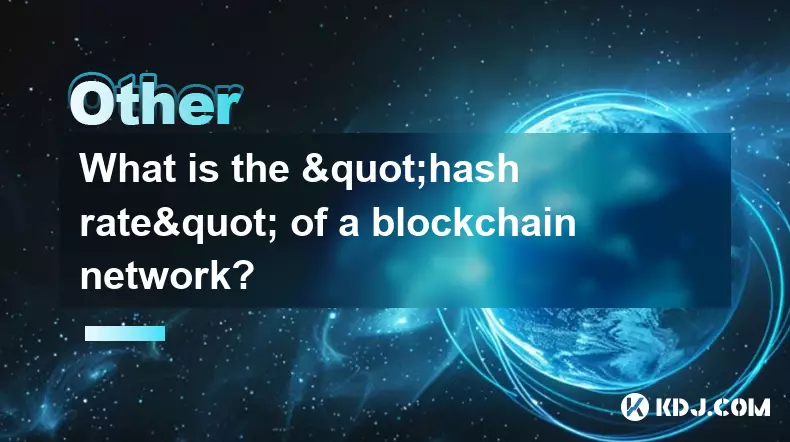
What is the "hash rate" of a blockchain network?
Oct 10,2025 at 03:55pm
Understanding Hash Rate in Blockchain Networks1. The hash rate refers to the total computational power being used to process transactions and mine new...
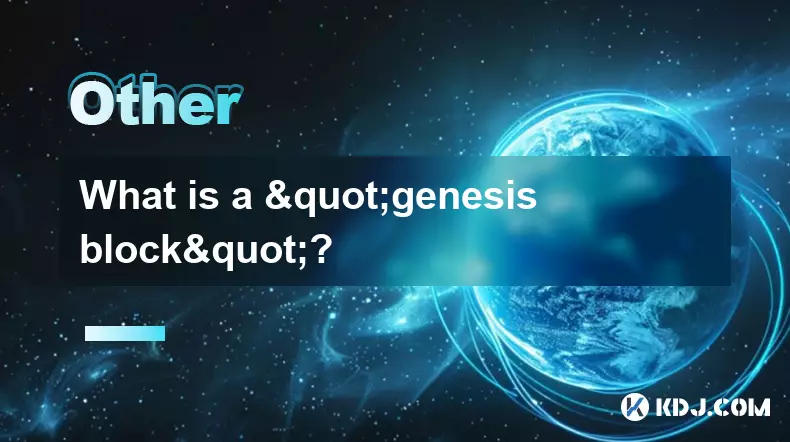
What is a "genesis block"?
Oct 15,2025 at 07:55pm
Understanding the Genesis Block in CryptocurrencyThe genesis block is the very first block in a blockchain network. It serves as the foundation upon w...

Who is Satoshi Nakamoto?
Oct 15,2025 at 01:01pm
Who is Satoshi Nakamoto?1. Satoshi Nakamoto is the pseudonymous individual or group credited with creating Bitcoin, the first decentralized cryptocurr...
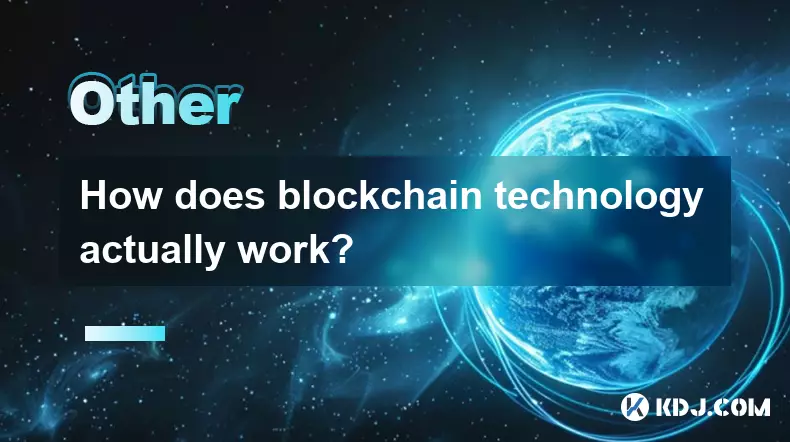
How does blockchain technology actually work?
Oct 11,2025 at 02:36pm
Understanding the Core Mechanism of Blockchain1. At its foundation, blockchain is a decentralized digital ledger that records transactions across mult...
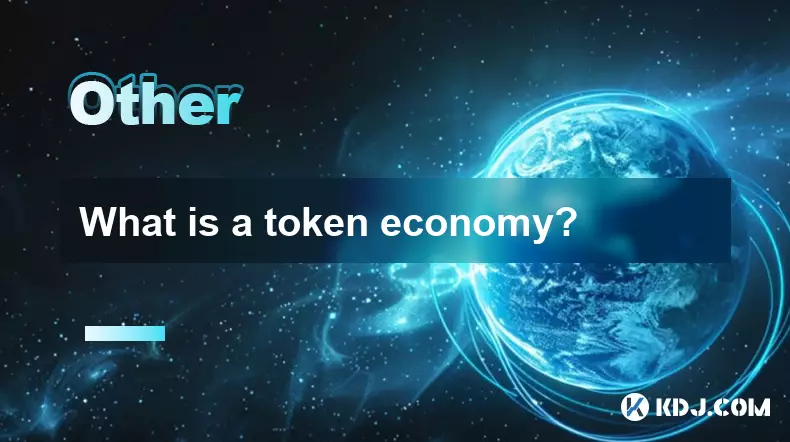
What is a token economy?
Sep 20,2025 at 12:18am
Understanding the Foundations of a Token Economy1. A token economy in the context of cryptocurrency refers to a system where digital tokens are used a...

What is a block explorer and how do you use it?
Oct 24,2025 at 12:36am
What Is a Block Explorer?1. A block explorer is a web-based tool that allows users to view and analyze data on a blockchain network in real time. It f...

What is the "hash rate" of a blockchain network?
Oct 10,2025 at 03:55pm
Understanding Hash Rate in Blockchain Networks1. The hash rate refers to the total computational power being used to process transactions and mine new...

What is a "genesis block"?
Oct 15,2025 at 07:55pm
Understanding the Genesis Block in CryptocurrencyThe genesis block is the very first block in a blockchain network. It serves as the foundation upon w...

Who is Satoshi Nakamoto?
Oct 15,2025 at 01:01pm
Who is Satoshi Nakamoto?1. Satoshi Nakamoto is the pseudonymous individual or group credited with creating Bitcoin, the first decentralized cryptocurr...

How does blockchain technology actually work?
Oct 11,2025 at 02:36pm
Understanding the Core Mechanism of Blockchain1. At its foundation, blockchain is a decentralized digital ledger that records transactions across mult...

What is a token economy?
Sep 20,2025 at 12:18am
Understanding the Foundations of a Token Economy1. A token economy in the context of cryptocurrency refers to a system where digital tokens are used a...
See all articles










































































